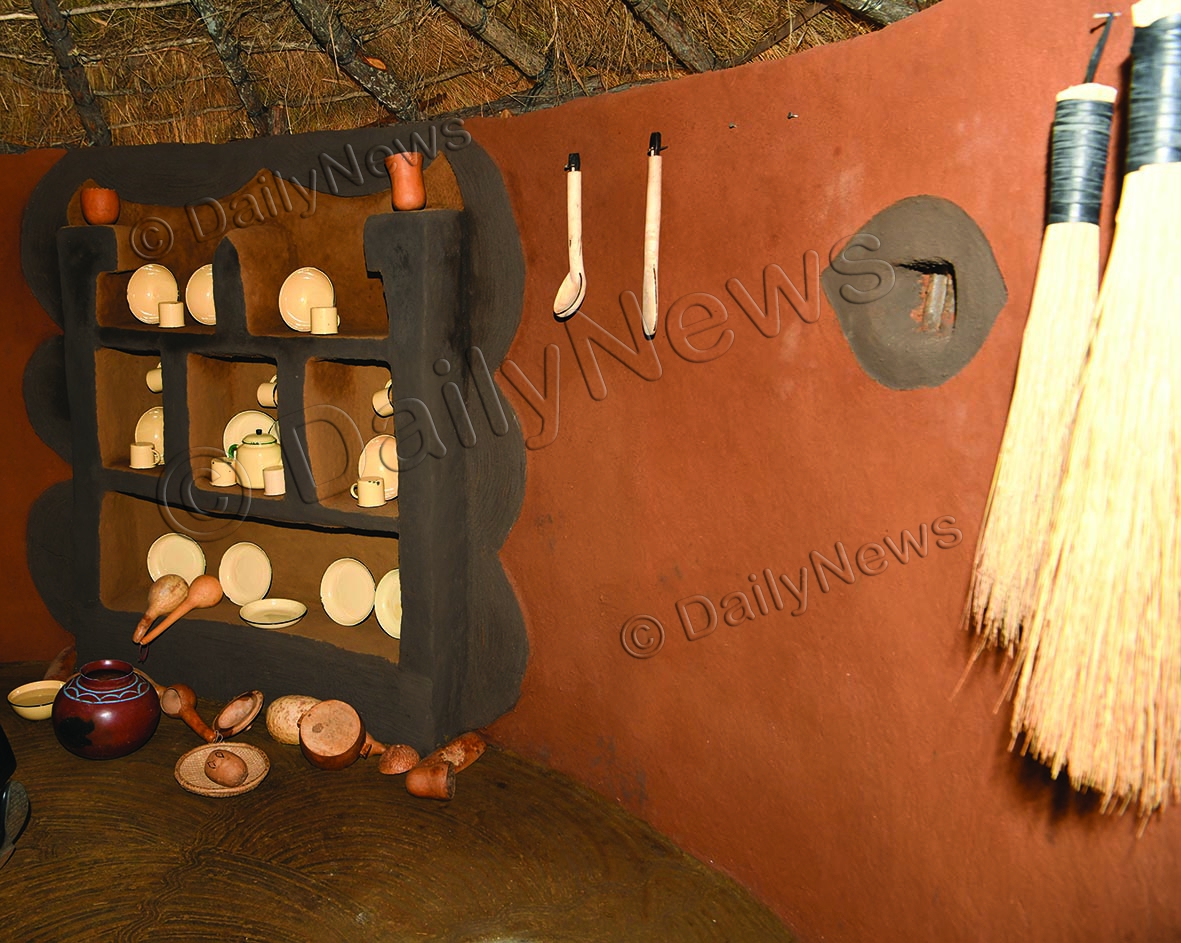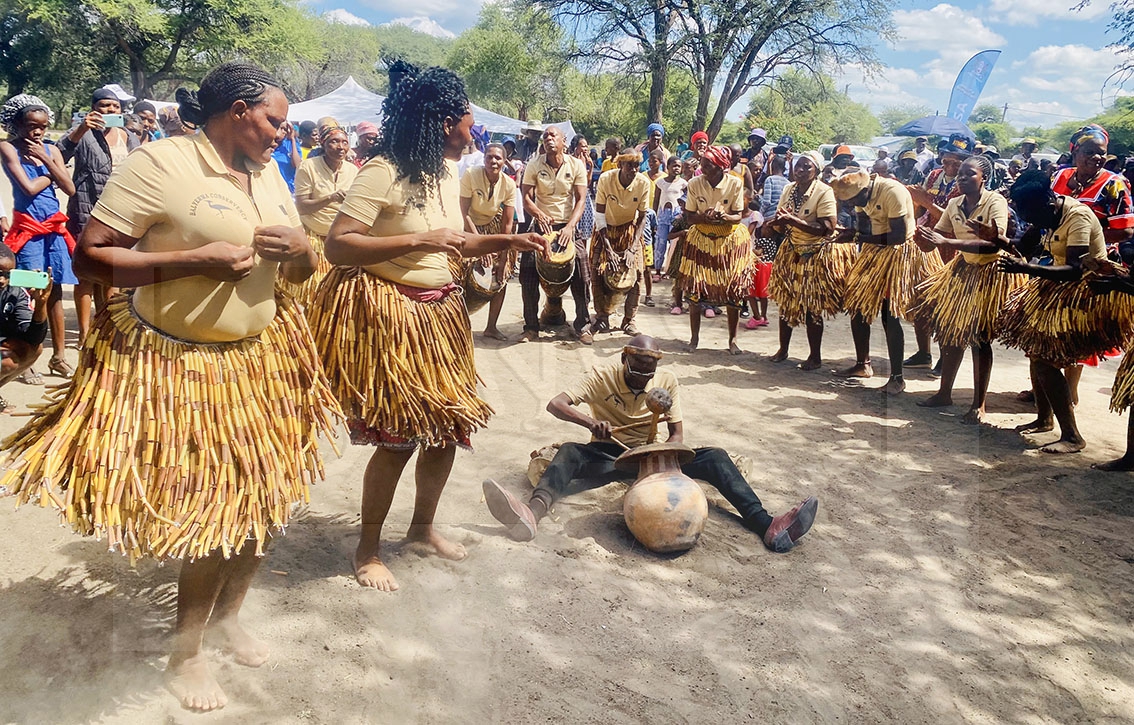Kobotlo evokes memories
25 Apr 2024
In the olden days, Batswana lived in grass-thatched mud huts all of whose raw materials were collected from the veld. In each of these huts, one would find a wall-mounted cupboard, loosely translated as kobotlo.
There are two of such huts, at the Hika la Ngwanyana cultural village that culture enthusiasts got to feast their eyes on as majestic artefacts.
Inside one of the huts was a shelf that captured the attention of guests, taking their memories back to many years ago when kobotlo used not to only decorate almost every hut, but formed part of the storage savers.
In an interview with BOPA, 67-year-old Montle Karele recalled that in the olden days after washing the dishes, they knew exactly where to place them, the kobotlo, always clean and somehow enhancing the look of the hut with matching hand-applied colourful mud.
Karele described the kobotlo as a beautifully designed rack, mostly crafted by women using mud, which is essentially clay mixed with water to form a paste. Just like the traditional houses made of clay by women, kobotlo stood out with its unique design.
The kobotlo in question has six compartments, holding enamel bowls and cups as well as kettles and wooden serving spoons. “We decorated the kobotlo with baskets to make it look this good,” she said. Karele remembers the olden days when she used to play outside the hut and being sent to fetch plates from the kobotlo at mealtime, knowing she would later need to wash and return them.
She said the kobotlo was special, no dirty plates could be found there, as it also served as an ornament in the house. She expressed gratefulness for the village trust for organising Hika la Ngwanyana Cultural festival, believing it would help younger generations connect with their cultural heritage.
“It helps them develop a strong sense of identity, belonging, and self-worth,” she added.
Karele emphasised the importance of understanding one’s roots, traditions, and values for personal edification and social development.
She also noted that the elders’ serving bowls and plates were exceptional, some adorned with flowers with matching lids and handles, known in Setswana as ndishi.
These crockery pieces also somehow brightened the somehow dull surroundings in the homestead. Oaitse Keatlhotswe, a 61-year-old elder expressed happiness that Bakgatla ba ga Mmanaana celebrated their culture alongside other tribes.
She looked forward to learning from other cultures as the festival events unfolded.
Keatlhotswe explained that mud huts were constructed using mud, straw, and sometimes other natural materials.
They began with a solid foundation made of stone for stability and to prevent moisture seepage.
The mud was mixed with straw or fibre to enhance strength and reduce cracking. She highlighted that in the olden days, these huts were built with pillars made from tree trunks to withstand rainy weather.
“During summer, the walls kept the heat away and in winter they kept the cold away, even raindrops did not make a lot of noise when hitting the roof because it was grass,” she recalled.
Keatlhotswe believes that Setswana traditional houses should be preserved as they reflected Botswana’s rich cultural heritage, teaching young people about their roots and their ancestors’ way of life.
She praised the recently concluded Hika la Ngwanyana Cultural Festival as a wonderful concept that would help young people appreciate and learn about the Setswana culture. Ends
Source : BOPA
Author : Bakang Wren
Location : GABORONE
Event : Cultural festival
Date : 25 Apr 2024








